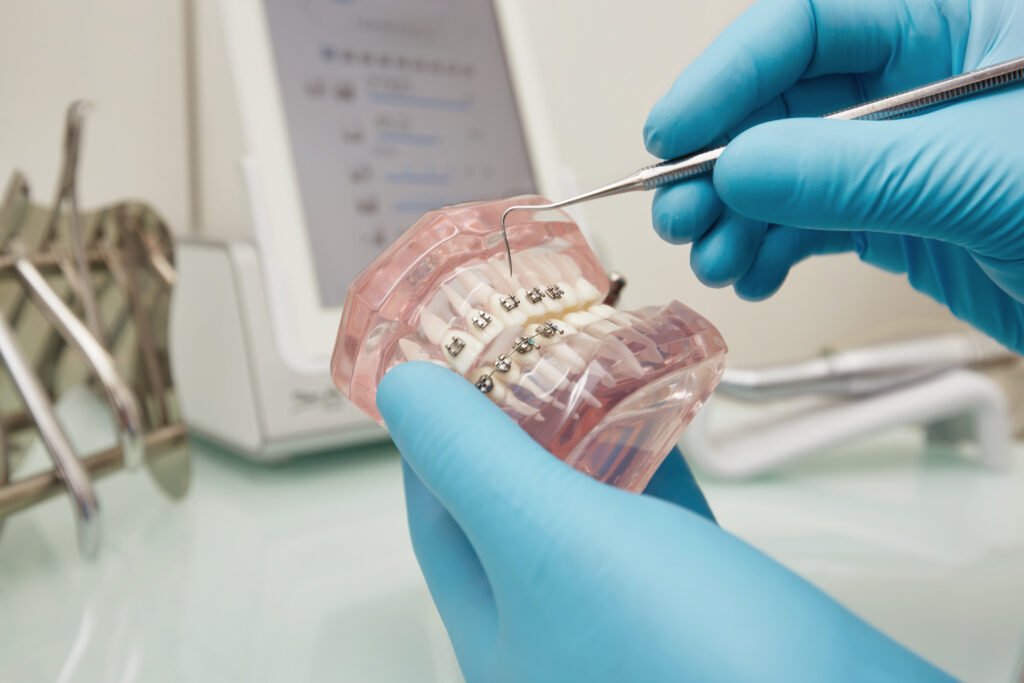Braces are one of the most common and effective orthodontic treatments designed to correct the position of teeth. But what exactly are braces, and how do they work?
How Braces Work
Braces function on a simple yet effective principle. Orthodontic wires apply pressure that gradually moves teeth through the bone tissue. This process takes time, as the movement of teeth must be steady and carefully controlled.
The orthodontic wire plays a crucial role by providing the necessary force for tooth movement. Once placed into the brackets, the wire creates continuous and targeted pressure, leading the teeth toward their desired positions.

Types of Braces
Metal Braces
The most common type is metal braces, which often use elastic bands. They are highly effective and relatively affordable. Although more noticeable, they provide reliable and fast results.
Ceramic Braces
For those seeking a more aesthetic option, ceramic braces are available. These are less visible, as their color matches the natural shade of the teeth. However, they tend to be more expensive and require special care.
Lingual Braces
Lingual braces are placed on the inner surface of the teeth, making them completely invisible. This option is ideal for patients who want an aesthetic solution, though they are more difficult to clean and are generally used in specific cases.
How Long Does Treatment Take?
The length of orthodontic treatment varies depending on the complexity of the case. In simpler cases, treatment may last from six months to two years, while more complex cases can take up to four years or longer.
Regular visits to the orthodontist are essential throughout treatment. Most often, these visits are scheduled monthly, though some techniques may require checkups every two weeks.

Age Considerations
Braces can be used at any age. While the best results are often achieved during growth periods, adults can also successfully undergo orthodontic treatment. Early consultation with an orthodontist helps identify potential issues and prevent more serious complications later on.
Common Myths
There are many misconceptions about braces. For example, some believe that braces damage tooth enamel. In reality, braces do not harm enamel. Problems usually arise from poor oral hygiene around the brackets. This is why it is especially important to maintain proper oral care during orthodontic treatment.
Planning the Treatment
Before beginning orthodontic treatment, a thorough assessment is required. This includes photographs, X-rays, and cephalometric analysis. All of this information allows the orthodontist to create an accurate treatment plan.
Braces are a proven and effective method for correcting the position of teeth. With the right choice and by following the orthodontist’s instructions, you can achieve a healthy smile and well-aligned teeth.


